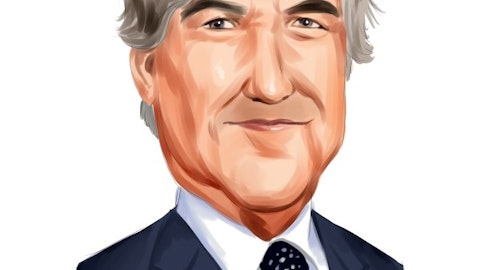Morgan Stanley (NYSE:MS) is expected to experience a revenue declination of 18% this fiscal year, but should see revenue growth of 22% by the end of FY2013, thanks to a rebound in sales and trading. One of the key growth initiatives for Morgan Stanley is its global wealth management operations, which have grown to account for 50% of total revenues, compared to 30% in 2007.
Another key growth opportunity is its ability to generate net interest income from this segment, where NII as a percent of revenue was 11% in 2011. We believe Morgan Stanley has room to grow this margin, especially when comparing it to wealth management peer Charles Schwab – where 35% of total revenue is derived from net interest income. With the purchase of Citi’s remaining stake of Smith Barney, Morgan Stanley will have one of the top retail platforms and should have less of a dependence on trading revenues.
Another plus for Morgan Stanley investors is the bank’s ability to enhance shareholder value by increasing its dividend and repurchasing shares. MS currently sports dividend yield of 1%, but has over $18 billion in cash. Morgan Stanley has also managed to lower its balance sheet risk, thanks in part to a focus on less capital-intensive businesses.
From a valuation standpoint, Morgan Stanley trades at one of the cheapest book multiples in the industry at 0.6x. What’s more is that the stock trades at one of the cheapest forward P/E ratios at only 9x. Also boding well for the bank is its 15% long-term expected EPS growth. We believe Morgan’s industry-low valuation, coupled with robust growth prospects, makes it one of the best value buys in the banking business. Billionaire Steven Cohen of SAC Capital is one of Morgan Stanley’s big-name investors (check out Steven Cohen’s biggest bets).
Citigroup Inc. (NYSE:C) is expected to grow revenues 8% in 2013 on the back of expected 10% loan growth. Citi is also a relatively cheap stock showing marked improvement, with 1.85% of loans in non-accrual status as of 3Q, down from 1.90% a year ago. 3Q results were strong, where loans increased 11% year over year and global deposits were up 5%. Citi also trades near the bottom of the industry at 0.6 times book, but its long-term expected EPS growth rate comes in at 11%. George Soros added Citi to his portfolio last quarter (check out George Soros’ newest picks).
What about the rest of Morgan Stanley’s peers?
JPMorgan Chase & Co. (NYSE:JPM) is another major banking stock, but expects sales to be flat this year following a 5% decline in 2011. JPMorgan is one of the better performing banks, up nearly 30% in 2012, although net interest income is expected to fall 7.0% this year. This comes despite expected 1.0% loan growth and 2% growth in interest-earning assets. Although JPMorgan’s valuation appears cheap at 0.9x book value, we believe its growth prospects warrant such a valuation. The bank is expected to grow 5-year EPS at only 7% annually, and 2013 should bring a 2% decline in net interest income and 3% fall in non-interest income. Ken Fisher – founder of Fisher Asset Management – did up his stake in JPMorgan over 125% last quarter (check out Ken Fisher’s biggest bets), so there’s clearly some support from the smart money.
UBS AG (NYSE:UBS) expects revenues to be down this year, but trades at a P/B of 1.1x – on the high end of the industry. Investment banking revenues are expected to be a smaller portion of UBS’s overall top line, which will help the company diversify away from volatile trading revenues. UBS is expected to cut its head count by around 16% by the end of 2015 to refocus on its core investment banking operations. The scale of its wealth management operations should also continue to facilitate comparatively wide margins, but we believe the stock’s valuation already reflects its turnaround capabilities. Billionaire Jim Simons is the top fund owner in UBS of those we track during 3Q (check out Jim Simons’ biggest bets).
Last but certainly not least, Goldman Sachs Group, Inc. (NYSE:GS) is one of the top banking stocks up close to 40% in 2012. Unlike many of the other banks, Goldman is expected to see revenues up 12% this year, as client risk and trading demand increases. Goldman also trades at only 0.9x book value and is one of the more internationally diverse companies in the global capital market, and we believe its investment banking capability remains best-in-class.
Still, Goldman’s equity trading and underwriting income is weaker than average, but we believe the bank could possess upside potential as this industry rebounds. Goldman has the name recognition that should help drive its 30%+ long-term EPS growth, making it another investment bank that we would keep an eye on. Ken Griffin – founder of Citadel Investment Group – is one of Goldman’s big-name investors (check out Ken Griffin’s newest picks).
To recap: we see Morgan Stanley as one of the top value plays in the industry, trading at only 0.6x book value. This, coupled with Morgan’s robust expected growth rate, makes us consider the stock as a ‘growth at a reasonable price’ play as well.
Regions Financial: One of the best banking bets
Hedge funds and insiders are bullish on Citi and more
AIG, Citi, Bank of America: Hedge funds love these financial stocks





